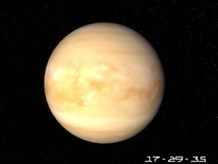So far I have examined some of the possible places that life
may be found in our solar system. I also covered some of the methods that are
used to locate planets around other stars. I went in depth about the transit
method and its strength and limitations. I started this blog with the hope of
gaining a better understanding of what life was and if there was a possibility
of life being someone else in the universe. I believe that there are places in the
universe where life would or has evolved. The universe is to vast for life to
only be limited to our little planet. We
as humans believe that we are special that we are the only intelligent life on
our planet but I feel that we are not special enough to be the only intelligent
life that is able to communicate. I have
also struggled with trying to grasp if what we will find is life in the mere sense
that it fits our 6 categories of what life is, or if we will in fact be able to
find life that is intelligent. I feel
that we will be able to find simple forms of life; we know that there are many
places in our own solar system that may be able to harbor primitive life. But it will take more resources and time to
try to find intelligent life. So it comes down to the fact that I think that we
will eventually find life in primitive forms but we may be less likely to find intelligent
life that can communicate with us.
If we are lucky many years down
the road to communicate with intelligent life, is that going to change
anything? They would be many light years away from us and if they are able to
communicate that doesn’t mean that we will be able to meet face to face. I feel
that it is great to go out and look for the unknown and search for life. If life
is found it will give us a sense that we are not alone but I feel that it won’t
change us. It may be better that we never find other intelligent life; humans
are constantly in war and conflict with each other. If life is found would there be a war between planets?









